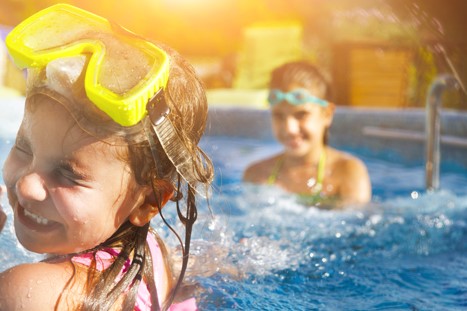Understanding and Preventing Accidental Drownings Among Children

Summer is here and we begin to hear stories of parents’ worst nightmares coming true: a child drowns in a swimming pool.
You’ve heard the stories. You can be watching your child and turn away for just a few seconds. That’s all it takes.
A startling statistic: 10 people drown every day in the United States. In fact, drowning is the second leading cause of unintentional death for children under the age of 14. Sadly, many of these deaths could have been prevented.
The Indiana Department of Child Services reveals a disturbing trend when it comes to children drowning in pools, bathtubs, ponds and other bodies of water due to lack of supervision. The report said 11 children died from drowning in State Fiscal Year 2019 and that drowning is one the primary contributors in child neglect deaths in Indiana.
How Do Accidental Drownings Happen?
Accidental drownings can happen for any number of reasons including:
- Failure to pay attention to young children while they are swimming or bathing
- Poorly trained or distracted lifeguards in public swim areas
- Overly crowded pools causing parents to lose track of children
- Poorly maintained emergency equipment
- Failure to install proper security systems including fences and gates
- Roughhousing in or around the pool
- Running around the pool edge, resulting in a slip and fall accident
- Overestimating a child’s swimming abilities
- Failure to recognize the signs of a child in distress
How Can Accidental Drowning Be Prevented?
Teach Your Child to Swim – One thing that parents can do to help protect their children from drowning is to have your child learn how to swim. There are many free swimming lesson programs available through local parks departments, the Red Cross, and the YMCA.
Give Children Your Full Attention – Parents should avoid engaging in any distracting activities while supervising children swimming or playing in or near water, according to a news release from National Water Safety Month.
Keep Pools Secured – If you own a pool, realize that you can be held liable for injury or death of an individual in or around your pool. “Install barriers such as fencing, self-locking gates and pool alarms on backyard pools to prevent access by children,” the release goes on to say. Many water related deaths and injuries are caused by the irresponsibility of a swimming pool owner or the operator of other swimming areas. Many of these situations occur when no one is even using the pool. Many times, a child can wander into the pool area when the owner is not around. While laws vary from state-to-state, it is generally required that a fence and a lockable gate be present to prevent unauthorized entry. Even if you have a sign that says something to the effect of: “Swim at Your Own Risk,” it may not be enough to protect you from liability.
There are many other regulations that need to be followed in order to keep private and public swimming areas safe. It is recommended that all of the requirements be carefully studied — before it is too late.
What If I Have Lost a Loved One In a Drowning Accident?
If you suspect that a member of your family or a loved one has been the victim of negligence leading to serious injury or death, contact Theodoros & Rooth. We will carefully review your situation and if we believe you have a case, we will stand by you and fight for your rights. There is never a fee until a settlement is reached. Have a great summer on the water, but be safe.